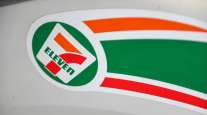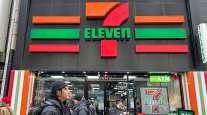Diesel Dips 0.6¢ to $3.862, But Still Far Above Year Ago
This story appears in the Sept. 19 print edition of Transport Topics.
The average price of U.S. retail diesel dipped 0.6 cent a gallon to $3.862 last week following two weeks of increases, the Department of Energy reported.
Diesel had risen 5.8 cents over the previous two weeks, DOE’s Energy Information Administration said Sept. 12 after its weekly survey of fueling stations.
Commercial trucking’s main fuel is now 26.2 cents below the two-year high of $4.124 reached on May 2 but still nearly a dollar higher than the price one year ago, $2.943.
DOE also said the retail average for regular gasoline declined, slipping 1.3 cents to $3.661. Gas had increased 9.3 cents over the previous two weeks and, like diesel, remains well above its year-ago level of $2.721.
Pump prices are “following the crude price path,” said Neil Gamson, an economist for EIA.
Since early August, the diesel average has remained between $3.81 and $3.897. Similarly, crude oil had held steady in the mid-to-high $80s for three weeks, before closing at $90.21 a barrel on Sept. 13 on the New York Mercantile Exchange. It was the first time crude oil reached $90 since Aug. 3. Crude has remained below the $100 mark since June 9.
Given the price of diesel, carriers are finding ways to cut their fuel costs.
Diel-Jerue Logistics Inc., an Ocala, Fla.-based refrigerated carrier, said it has reduced fuel costs by enrolling in the Schneider Carrier Purchasing Program, a discount program for small and midsize carriers offered by Schneider Logistics, a unit of Schneider National Inc., Green Bay, Wis.
The company joined the program in April, said Chuck Harman, Diel-Jerue’s vice president.
Through the program and by using Comdata fuel cards, the company’s drivers get larger discounts when they fuel up at TA Travel Centers and Love’s truck stops, he said.
“They’re seeing about 14 cents per gallon less retail at the pump,” he said. “Right now, we’re passing that on completely to the drivers.”
That discount is a strong incentive for driver recruitment and retention, Harman said. “They love it. It’s been a good selling point for our drivers.”
Diel-Jerue, which employs about 50 owner-operators, transports tropical plants from South Florida and hauls frozen food products.
In addition to the discount program, Harman said, the company also has been looking into truck accessories — including solid wheel hubs and flaps for the tails of trailers to kill backdraft — as a way to reduce fuel consumption.
“It is something we’re considering,” he said. “It’s just a matter of pricing for us.”
An official with G&P Trucking Co., Gaston, S.C., said the truckload carrier has taken a multifaceted approach to fuel savings. Besides implementing new technologies to cut consumption, it also is investing in more-efficient equipment, said Richard Strobel, senior vice president at G&P.
Strobel said the company has installed auxiliary power units on 70% to 75% of the tractors in its fleet of about 330. A trucker could burn 10 to 11 gallons of fuel while idling through the night, but the APUs have slashed fuel consumption to about a tenth of that, he said.
As a result, he said, the APUs have boosted overall companywide miles per gallon by two-tenths or three-tenths of a gallon at G&P, which hauls dry goods, mainly in the Southeast and Southwest.
Strobel said the APUs have been paying for themselves in about 13 to 14 months.
“Once you’ve paid for it, it generates true savings,” he said.
For several years, G&P also has been using software from Integrated Decision Support Corp., which guides drivers to the best places to fill their fuel tanks based on their routes and tax differences.
G&P also is looking for newer, more-efficient vehicles as another way to save. Strobel said the company recently upgraded its fleet by purchasing 30 new model 2012 trucks.
Meanwhile, the International Energy Agency and the Organization of Petroleum Exporting Countries oil cartel both lowered their forecasts for crude oil demand last week.
On Sept. 13, the Paris-based IEA, citing reduced expectations about economic growth, lowered its oil demand projections by 400,000 barrels a day for 2012 and by 200,000 barrels a day for 2011.
A day earlier, OPEC cut its forecast for global oil demand in 2011 by 150,000 barrels a day.




